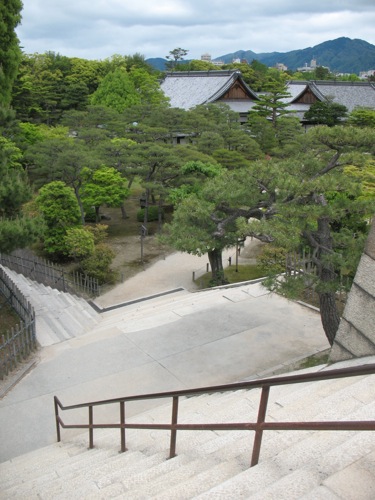Nijō Castle is an interesting contrast to many of the sights in Kyoto, which are largely temples. It consists of two inner palaces, surrounded by a stone wall and outer moat. On the map below, you can see that there’s a larger palace at the bottom, just inside the outer moat (unfortunately, on the part of the map that was dirty and looks blurry). This is Ninomaru Palace. The second palace, Honmaru, has an additional moat and wall surrounding it.
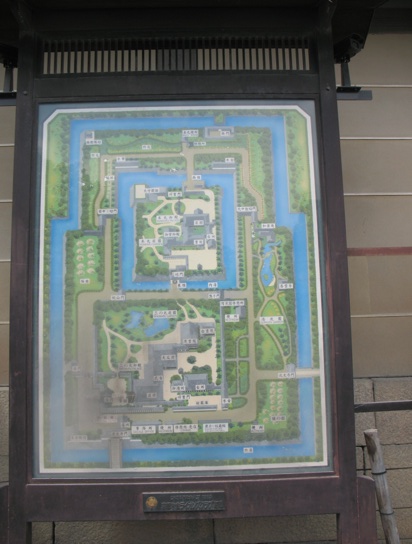
Each of the two palaces consists of several interconnected buildings. Once you enter the castle walls, you can walk throughout the gardens that surrounds the two palaces, and there is also a spot where you can climb the walls. You can only enter Ninomaru Palace, though. Unfortunately, photos aren’t allowed inside.
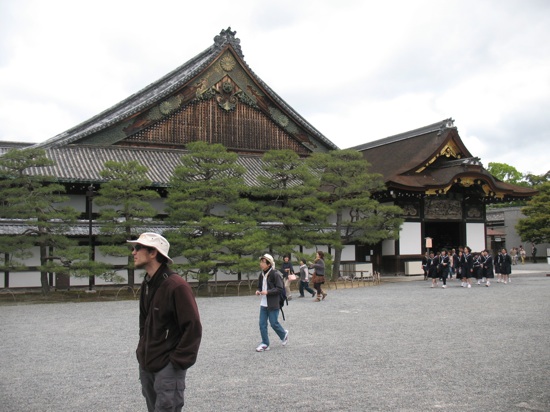
Inside the castle, the rooms are arranged so that visitors would be received in a room that corresponded to their rank- lower-ranked visitors only got to see the outer rooms, and higher-ranked ones could actually meet with the shogun in an inner room. While the walls are decorated with some beautiful paintings- with wide application of gold leaf- the castle as a whole is obviously, and purposefully, designed for security. For example, the doors behind which where the shogun’s bodyguards would wait while he was giving audiences are actually highlighted in the decor, rather than hidden. More obviously, the floors throughout the building are designed to squeak when you walk on them. As you can imagine, the crowds of schoolkids really have fun with this.
The paintings themselves were definitely interesting to see. There was a surprising range of styles, from quite realistic birds and plants on the walls to really abstract applications of gold leaf on the ceilings. But we did as requested and didn’t take any photos.
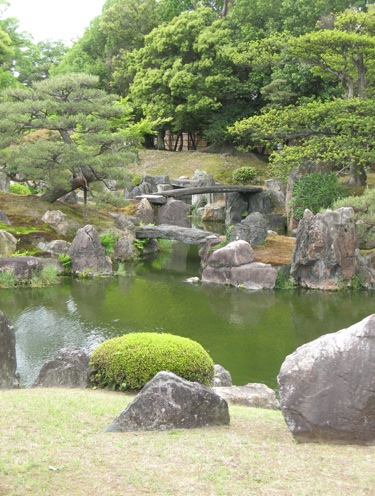
After going through the palace, we strolled through the gardens for a bit. They’re actually quite extensive. One thing I haven’t really mentioned so far is the huge number of crows that we saw-and head- throughout the urban areas of Japan. Their cawing helped form the background noise for the trip.
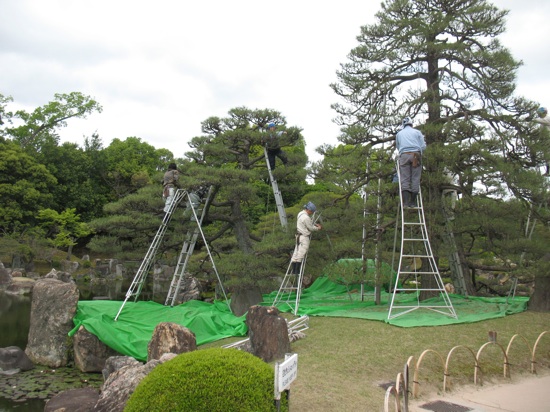
There was always a sense that you were in an enclosed space, though- the walls were never quite out of sight.

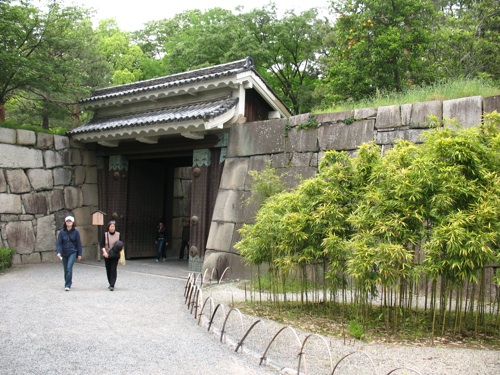
There was one place where you could climb up the inner wall (the one that surrounds Honmaru Palace) and get a good view, mainly of Honmaru and the gardens, but also of the hills surrounding Kyoto. It wasn’t quite tall enough to see many landmarks, but it was nice to be able to see over the wall.
